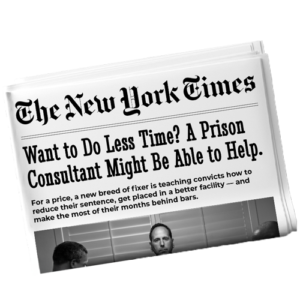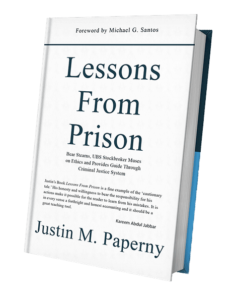Tracii Hutsona was sentenced to 51 months in federal prison. She didn’t expect that outcome. She didn’t like it. But she accepted it—and immediately got to work. Her goal was clear: get home as fast as possible, without cutting corners.
She didn’t hire us at White Collar Advice just to feel better. She worked with us because she wanted a plan she could execute. Not one for show. A real plan that could produce real results. That meant being honest, following through, and staying focused on what mattered.
What a Release Plan Actually Does—If You Live It
Before surrendering to prison in March 2023, Tracii built a release plan. That’s step one. But step two—and the harder part—is living it. She didn’t write a release plan and stash it in her locker. She used it. She showed it to her case manager during her first team meeting.
She didn’t walk in like she knew better. She explained the plan clearly: “This isn’t me telling you how to do your job. This is how I’m holding myself accountable.” That approach worked. Her case manager listened. No promises. No guarantees. Just a foot in the door.
Don’t Wait for Permission—Start Adding Value
In the weeks that followed, Tracii got to work. She didn’t sit around waiting for approval. She joined programs, enrolled in classes, and eventually started teaching. She taught creative writing. Then life skills. Then release planning. She got pushback at first—some staff didn’t like the idea of a prisoner leading reentry programming. But she kept showing up.
When the right staff saw the results, they endorsed her work. The class she helped build was formalized. She wasn’t waiting to be recognized. She made herself useful.
Daily Writing. Teaching. Serving. Repeat.
Tracii wrote a blog post every single day from inside prison. She sent it to her daughter, who posted it online. She documented her progress—not just what she was doing, but why it mattered. This wasn’t about scoring points. It was about building a record. A real record.
She also got involved in programs like Angel Tree for children of incarcerated parents. It had nothing to do with strategy. She’d been involved with Angel Tree since 2013. It mattered to her. And that’s the key: doing work that’s real, consistent, and easy to verify.
What the Progress Report Said—and Why It Mattered
Eventually, her case manager issued a progress report. It included:
- Documentation of her teaching and program work
- Her leadership in the new release planning class
- Her participation in the prison’s new “Grow” honor dorm program
- Her initiative with Angel Tree and other prison-led events
No fluff. No filler. Just a timeline of what she actually did. That report would later support her request for a sentence reduction. The judge granted it—despite strong opposition from the government.
Why? Because the judge saw something new. Something that wasn’t in the PSR. A body of work. A consistent effort that couldn’t be faked.
What Everyone Wants: More Time in the Halfway House
When you hear “maximum halfway house time,” don’t assume it’s automatic. It’s not. It’s earned. And Tracii earned it—12 months in a halfway house. That didn’t happen because someone made a call. It happened because she made her case manager’s job easy.
She built the record. She documented her progress. She followed through.
When the sentencing reduction was approved, the case manager submitted her for halfway house. The work was already done.
Consequences of Inaction: What Happens If You Don’t Do the Work
Let’s be direct. If Tracii had done what most people do—nothing—she’d still be serving her 51-month sentence. She wouldn’t have had a release plan. She wouldn’t have taught. She wouldn’t have written daily. And her case manager wouldn’t have had anything to support a reduction or halfway house placement.
No progress report. No case. No early release.
Too many defendants focus on paperwork and hope someone else sees their potential. That’s not how this works. The system rewards action, not intention.
Practical Steps You Can Take Right Now
If you’ve already been sentenced, or your sentencing is coming up, here’s what you need to do:
- Create a real release plan. Not boilerplate. A plan that’s specific to you.
- Bring the plan to prison with you. Show it to your case manager during your team meeting.
- Start programming immediately. Don’t wait. Enroll in what you can. Lead where possible.
- Document everything. Write daily. Keep records. Send updates home. Build your file.
- Serve your community inside. Teach, support, and contribute. Make yourself visible for the right reasons.
Final Thought: Follow Through or Get Left Behind
The people who get home sooner—those who get 12 months in the halfway house or sentence reductions—they’re not the lucky ones. They’re the ones who execute.
If you’re serious about your outcome, don’t settle for a plan that sounds good. Build one you’ll follow. Then do the work, document it, and put yourself in the best position to succeed.
If you want help getting started, schedule a free call with our team or join our Monday webinar. We’ll walk you through the process.
Justin Paperny




